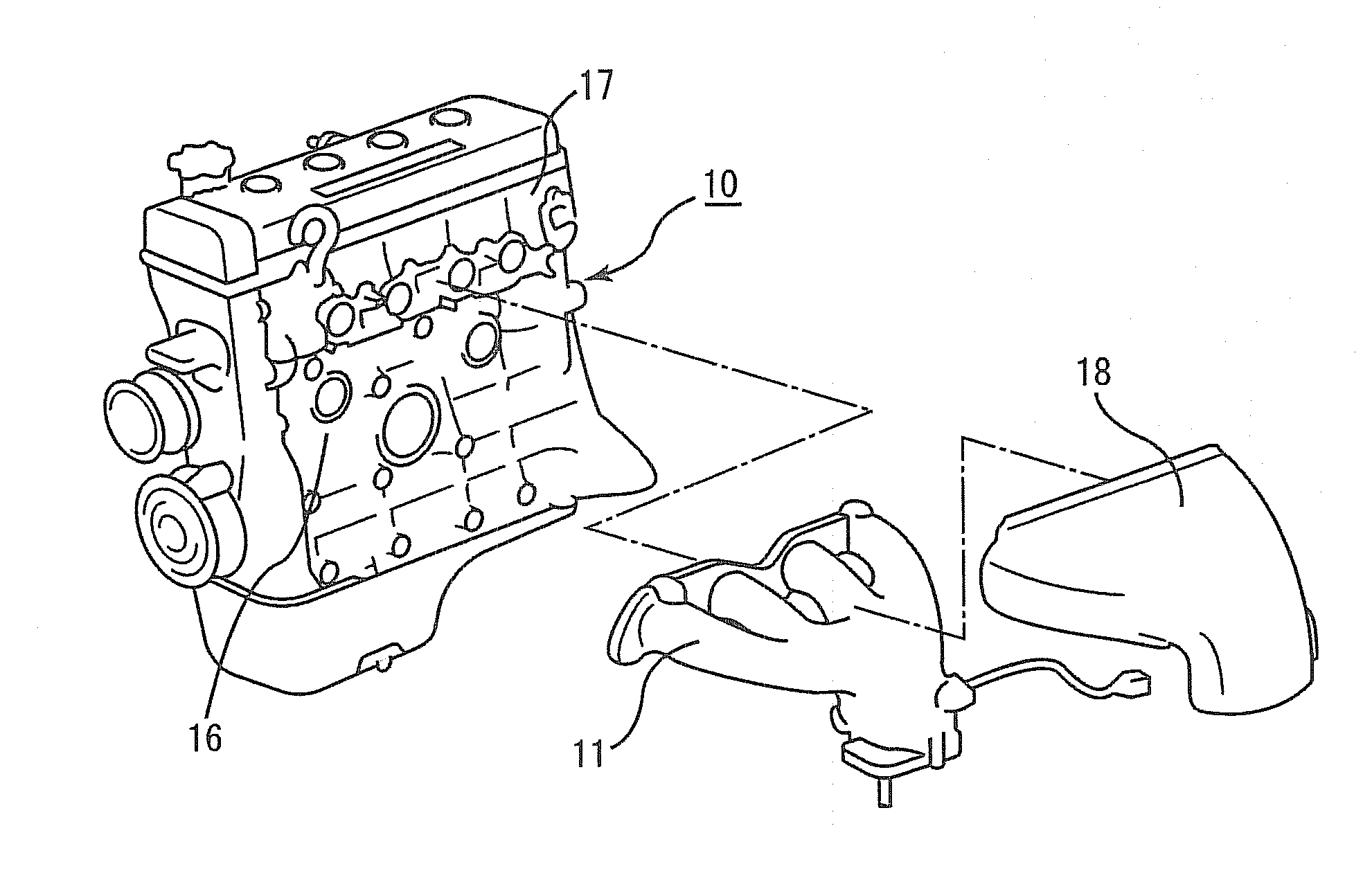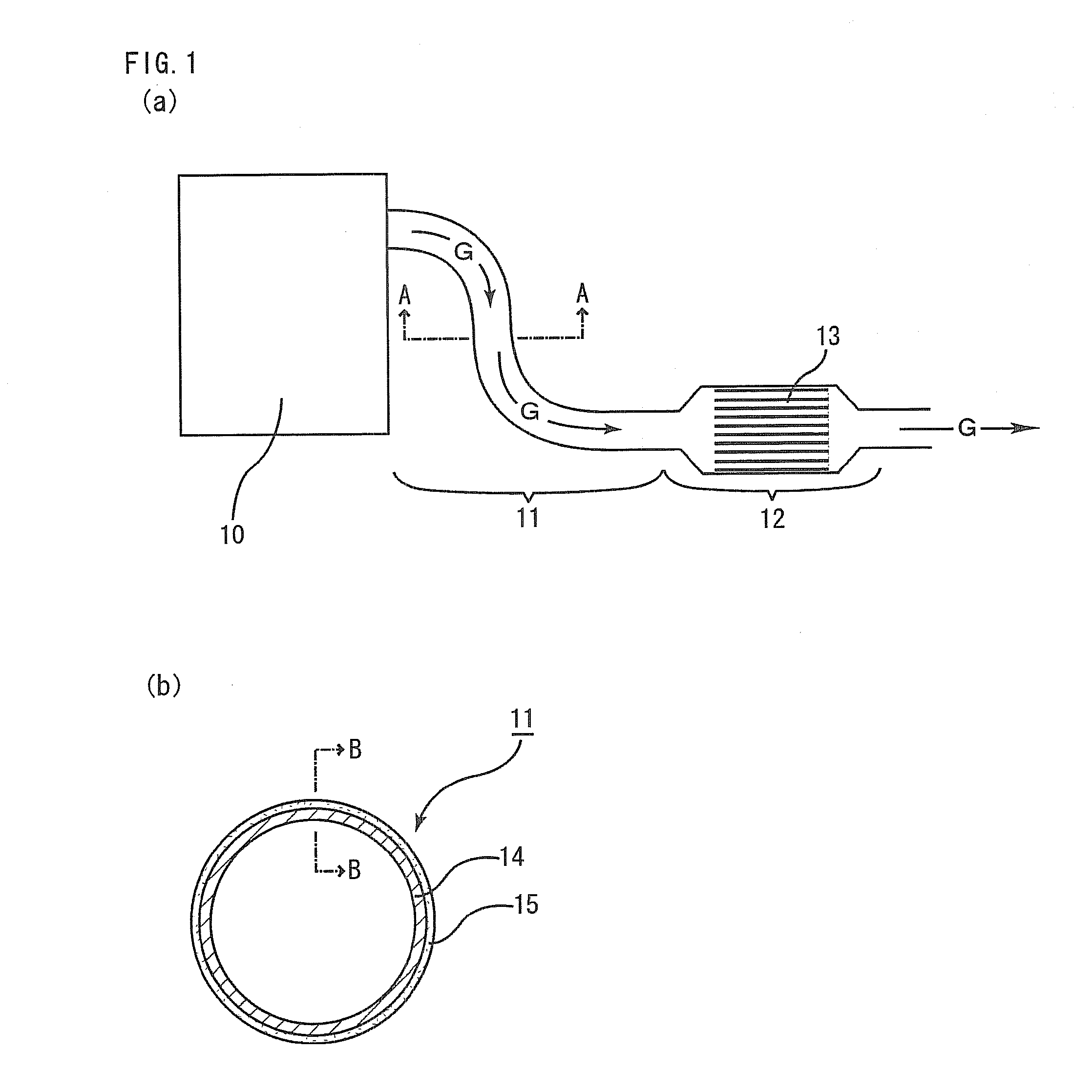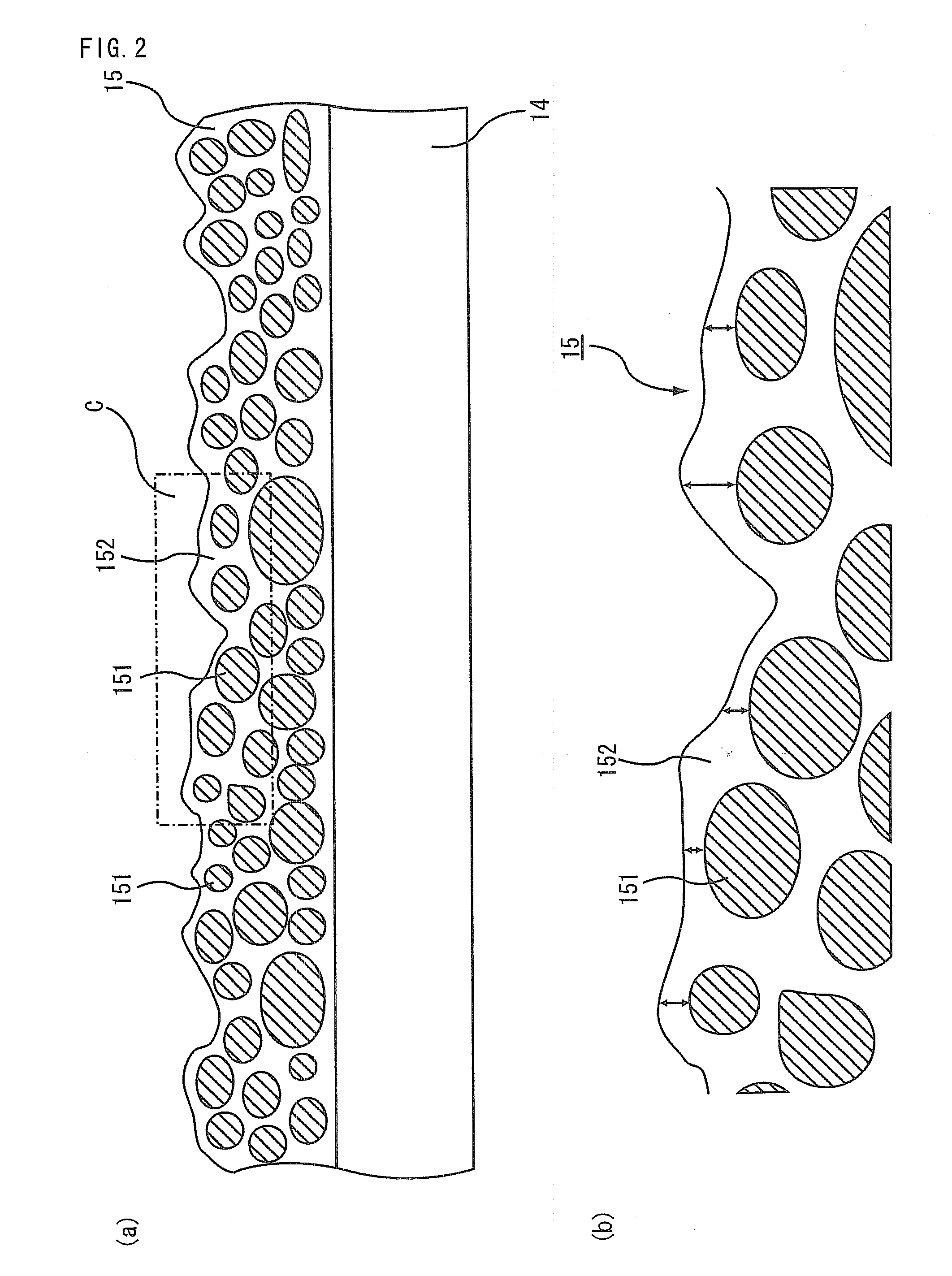Exhaust pipe
a technology of exhaust pipe and exhaust gas, which is applied in the direction of machines/engines, mechanical equipment, surface coverings, etc., can solve the problems of increased discharge amount of contaminants, lowered fuel efficiency, and increased exhaust gas discharge, so as to facilitate heat transfer
- Summary
- Abstract
- Description
- Claims
- Application Information
AI Technical Summary
Benefits of technology
Problems solved by technology
Method used
Image
Examples
example 1
[0155](1) A cylindrical (cross sectional shape is substantially perfect circle) metal base having a diameter (external diameter) of 40 mm, a thickness of 2 mm, and a length of 300 mm was used as a starting material. The metal base was made of SUS430 and had the following properties: thermal conductivity at 100 to 200° C.: 25 W / mK; emissivity at a wavelength of 1 to 15 μm at 600° C.: 0.30; and coefficient of thermal expansion in a temperature range of room temperature to 500° C.: 10.4×10−6 / ° C. First, this metal base was ultrasonically cleaned in an alcohol solvent, and then sandblasted to make the outer peripheral face of the metal base into a rough face having the maximum height Rz of 2.5 μm. The sandblasting was performed for 10 minutes using Al2O3 abrasive grains of #80.
[0156](2) Separately, 30% by weight of a MnO2 powder, 5% by weight of a FeO powder and 5% by weight of a CuO powder as crystalline inorganic materials, and 60% by weight of a BaO—SiO2 glass powder as an amorphous ...
examples 2 to 5
[0165]Each exhaust pipe body was produced in the same way as in Example 1 except that the average thickness of the amorphous binder at a location nearer the outer peripheral face of the exhaust pipe body than a location of crystalline inorganic materials was set to the thickness shown in Table 1.
[0166]The average thickness was adjusted by controlling the firing temperature.
[0167]That is, the firing temperature was changed to 850° C. in Example 2, 820° C. in Example 3, 800° C. in Example 4, and 780° C. in Example 5.
PUM
| Property | Measurement | Unit |
|---|---|---|
| thickness | aaaaa | aaaaa |
| emissivity | aaaaa | aaaaa |
| softening temperature | aaaaa | aaaaa |
Abstract
Description
Claims
Application Information
 Login to View More
Login to View More - R&D
- Intellectual Property
- Life Sciences
- Materials
- Tech Scout
- Unparalleled Data Quality
- Higher Quality Content
- 60% Fewer Hallucinations
Browse by: Latest US Patents, China's latest patents, Technical Efficacy Thesaurus, Application Domain, Technology Topic, Popular Technical Reports.
© 2025 PatSnap. All rights reserved.Legal|Privacy policy|Modern Slavery Act Transparency Statement|Sitemap|About US| Contact US: help@patsnap.com



